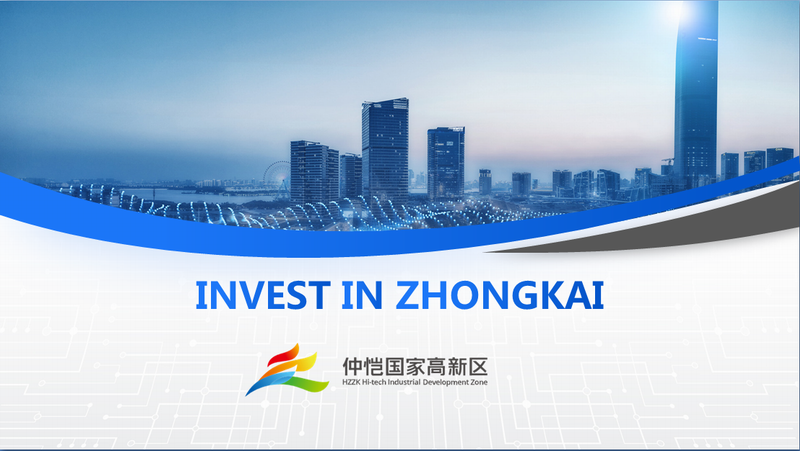One of the first group of National High-tech Industrial Development Zones in China

National High-tech Industrial Development Zones are crucial to the economic and technological framework of China. These zones are designed to stimulate innovation and growth by attracting high-tech enterprises. The number of national high-tech zones has expanded to 178, indicating substantial growth. In 2021, the research and development budget within these zones exceeded the 1 trillion-yuan mark. Well-known companies such as TCL, Desay, and Yiwei Lithium Energy are flourishing in these environments. International partnerships with renowned companies like Legrand, Hager, Coca-Cola, LG, SK, SONY, Cree, and AGC further amplify their global influence.These well-known companies are all located in Huizhou Zhongkai High-tech Zone。
Historical Context and Significance
Origin and Development
Establishment of the first group of zones
China established its first development zones in the 1970s. These zones emerged as a strategic initiative to bolster economic growth. The government hand-selected locations along the southern coast, including Shenzhen, Zhuhai, Shantou, and Xiamen. These areas aimed to attract foreign direct investment. The zones served as testing grounds for transitioning to a more liberal and capitalist economic model. This approach marked a significant shift in China's economic policy.
Evolution over the years
The development zones have evolved significantly over the years. Initially focused on attracting investment, the zones now emphasize innovation and technological advancement. The zones facilitated the offshoring of labor-intensive industries. This strategy allowed China to transfer its development successes to other countries. The zones increased business opportunities and contributed to China's global economic influence.
Role in China's Economic Growth
Contribution to GDP
The development zones play a crucial role in China's economic growth. These zones contribute significantly to the national GDP. The zones have become hubs for high-tech industries. The economic activities within these zones generate substantial revenue. The zones support the overall economic framework of the country.
Impact on technological innovation
The zones have a profound impact on technological innovation. High-tech enterprises thrive in these environments. The zones foster research and development activities. Companies within the zones engage in cutting-edge technological advancements. The zones serve as innovation hubs, driving progress in various sectors.
Reasons for Investment in Development Zones
Government Policies and Incentives
Tax benefits
National High-tech Industrial Development Zones offer significant tax benefits. The government provides lower tax rates to attract high-tech enterprises. These zones often receive tax exemptions for specific industries. Companies benefit from reduced corporate income taxes. The government aims to stimulate economic growth through these incentives.
Supportive regulations
Supportive regulations create a favorable business environment. The government offers quick responses to changes in the market. Development zones receive assistance with accounting and legal services. Marketing and consulting services are also available. These supportive measures encourage foreign investment.
Strategic Location Advantages
Proximity to major cities
Development zones enjoy proximity to major cities. This location advantage facilitates access to large markets. Companies benefit from a well-connected transportation network. Proximity to urban centers enhances business opportunities. Major cities provide a pool of skilled labor.
Access to resources and infrastructure
Development zones boast excellent access to resources. High-tech infrastructure supports business operations. Companies benefit from modern facilities and utilities. The government invests in advanced technological systems. These resources contribute to the success of enterprises within the zones.
Types and Classifications of Development Zones
Different Categories of Zones
High-tech zones
High-tech zones play a vital role in China's innovation-driven development strategy. These zones focus on fostering technological advancements and promoting high-quality economic growth. High-tech zones serve as policy-guided clusters for high-tech industries. These zones encourage collaboration between research institutions and enterprises. This collaboration leads to the development of innovative high-tech products.
Economic and Technological Development Zones
Economic and Technological Development Zones (ETDZs) aim to attract foreign direct investment (FDI). These zones provide incentives for manufacturing and industrial activities. ETDZs contribute to economic growth by creating a favorable business environment. These zones support the establishment of manufacturing facilities and industrial parks. The government offers tax benefits and supportive regulations within these zones.
Criteria for Classification
Technological focus
The classification of development zones often depends on their technological focus. High-tech zones prioritize research and development activities. These zones support industries that engage in cutting-edge technological advancements. The government encourages innovation through policies and incentives. High-tech zones aim to transition China into an innovative economy.
Industrial specialization
Industrial specialization serves as another criterion for classifying development zones. ETDZs focus on specific industries such as manufacturing and technology. These zones provide infrastructure and resources tailored to industry needs. Industrial specialization enhances the competitiveness of enterprises within the zones. The government supports the growth of specialized industries through targeted policies.
Benefits of Development Zones
Economic Benefits
Job creation
Development zones contribute significantly to job creation. High-tech industries establish operations within these zones. These industries require a skilled workforce. Local communities benefit from increased employment opportunities. The presence of these zones leads to economic growth in surrounding areas.
Increased foreign investment
Foreign investors find development zones attractive. The zones offer favorable conditions for business operations. Investors gain access to advanced infrastructure and resources. Government incentives further encourage investment. Foreign capital flows into the zones, boosting economic activity.
Technological Advancements
Innovation hubs
Development zones serve as innovation hubs. Companies engage in cutting-edge research and development. Collaboration between enterprises and research institutions occurs frequently. This environment fosters technological advancements. The zones become centers of innovation and creativity.
Research and development opportunities
Research and development opportunities abound in development zones. High-tech companies prioritize innovation. These companies invest in new technologies and processes. The zones provide a supportive environment for experimentation. Businesses thrive by developing groundbreaking products and services.
Case Study: The construction of an indicator system for world-class parks highlights the benefits of development zones. The system was based on principles that promote economic and technological growth. This approach illustrates how development zones foster innovation and progress.
Factors to Consider for Investment
Market Potential
Demand for High-Tech Products
Investors should evaluate the demand for high-tech products within development zones. High-tech industries often drive innovation and economic growth. These industries attract businesses seeking cutting-edge technologies. Development zones offer a conducive environment for technological advancements. Investors can capitalize on the growing demand for innovative solutions.
Growth Prospects
Growth prospects within development zones present significant opportunities. The zones provide a platform for emerging industries. Businesses can leverage advanced infrastructure and resources. Strategic investments in these zones can yield substantial returns. Investors benefit from the zones' focus on fostering economic expansion.
Risk Assessment
Political Stability
Political stability is crucial for investment decisions. Development zones often enjoy government support and favorable policies. Stable political environments ensure consistent regulatory frameworks. Investors gain confidence from predictable business conditions. Political stability enhances the attractiveness of development zones.
Economic Fluctuations
Economic fluctuations can impact investment outcomes. Development zones mitigate risks through regulatory benefits and tax incentives. These measures reduce investment costs and enhance profitability. Investors should assess the zones' resilience to economic changes. A well-structured investment strategy considers potential economic shifts.
Well-known Companies in Zhongkai High-tech Zone
Leading Enterprises
TCL and Desay
TCL and Desay have established themselves as leading enterprises within the Zhongkai High-tech Zone. TCL focuses on consumer electronics and home appliances. The company has become a global leader in television manufacturing. Desay specializes in automotive electronics and communication equipment. Both companies contribute significantly to the technological advancements in the zone. The presence of these well-known companies enhances the reputation of the Zhongkai High-tech Zone.
Yiwei Lithium Energy
Yiwei Lithium Energy plays a crucial role in the Zhongkai High-tech Zone. The company specializes in the production of lithium batteries. Yiwei Lithium Energy supplies batteries for various applications, including electric vehicles and energy storage systems. The company's commitment to innovation drives its success in the high-tech industry. Yiwei Lithium Energy's contributions to sustainable energy solutions align with the goals of the Zhongkai High-tech Zone.
International Collaborations
Partnerships with Legrand, Hager, and Coca-Cola
The Zhongkai High-tech Zone fosters international collaborations. Partnerships with Legrand, Hager, and Coca-Cola exemplify this global engagement. Legrand focuses on electrical and digital building infrastructures. Hager specializes in electrical installations and building automation. Coca-Cola operates in the beverage industry. These partnerships enhance the technological capabilities of the high-tech zone. The collaborations also promote knowledge exchange and innovation.
Collaborations with LG, SK, SONY, Cree, AGC
Collaborations with LG, SK, SONY, Cree, and AGC further strengthen the international presence of the Zhongkai High-tech Zone. LG and SK contribute to advancements in electronics and telecommunications. SONY focuses on consumer electronics and entertainment. Cree specializes in LED lighting and semiconductor products. AGC operates in the glass and chemical industries. These collaborations drive technological progress within the zone. The partnerships also facilitate access to global markets and resources.
National High-tech Industrial Development Zones play a vital role in China's economic and technological landscape. These zones serve as hubs for innovation and creativity, attracting investors seeking opportunities in high-tech industries. The strategic importance of these zones lies in their ability to foster technological advancements and enhance urban innovation. Investors must recognize the potential of these zones for strategic investment and decision-making. A well-planned approach can lead to substantial returns and contribute to sustainable growth. Understanding the significance of these zones is crucial for maximizing investment opportunities and driving economic progress.
See Also
Pioneering National High-tech Industrial Development Zone in China
Elevation of Zhongkai High-tech Zone: An Industrial Development Analysis
Top-Ranked High-tech Zone in 2024: Zhongkai Industrial Hub
The Progression of Zhongkai High-tech Zone: A Leader in Electronic Information Sector
The Emergence of Zhongkai High-tech Zone: A Flourishing Electronic Information Hub
Zhongkai High tech Zone National foreign trade transformation and Upgradi Base(Electronic Information)Cloud Platform.
Address: Zhongkai High-tech Zone,Huizhou City ,Guangdong,China
E-mail: huizhoueii@163.com 13510001271@163.com
Tel: +86-0752-3279220 Mobile: +86-13510001271


